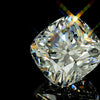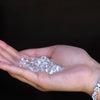
What Are Eye Clean Diamonds: Clarity Explained for Buyers
When I discuss eye-clean diamonds, I'm referring to stones that appear flawless to the naked eye. The term 'eye-clean' denotes diamonds that, when viewed by an average person at a typical viewing distance, show no visible inclusions or blemishes.
This is an important concept in the diamond industry because it affects both the beauty and value of a diamond.
Clarity is a crucial factor in determining a diamond's quality and is graded on a scale. However, the grading is done under ten times magnification, which means that a diamond might have inclusions that are visible under a microscope or loupe but are imperceptible without such magnification.
As a knowledgeable individual in the field, I understand that the clarity of a diamond is categorized by grades such as Flawless (FL), Internally Flawless (IF), Very Very Slightly Included (VVS), Very Slightly Included (VS), Slightly Included (SI), and Included (I). An eye-clean diamond will fall into one of the grades where inclusions are not visible to the naked eye, often in the VS or SI categories. The location, size, and color of inclusions can affect a stone's appearance and whether or not it is eye-clean.
The significance of eye-clean diamonds lies in their appeal to consumers who seek out the splendor of a perfect diamond without the higher cost typically associated with higher clarity graded stones. My experience has shown me that many people prefer to invest in an eye-clean diamond, even if it has a lower clarity grade, as it often looks identical to a higher grade diamond once set in jewelry, yet comes at a much more accessible price point. This is why understanding eye-clean clarity is so beneficial to anyone looking to purchase a diamond – it can lead to a beautiful, smart purchase that balances both aesthetics and budget.
Understanding Clarity in Diamonds
Clarity is a critical attribute in evaluating diamond quality, directly impacting its aesthetic and value. It captures the presence and visibility of internal imperfections or inclusions, and surface blemishes.
Clarity Grades and Their Meanings
The clarity of a diamond is assessed using a standardized system, where grades range from Flawless (FL), with no inclusions or blemishes visible under 10x magnification, to Included (I1, I2, I3), where inclusions are noticeable to the naked eye.
The GIA Clarity Scale
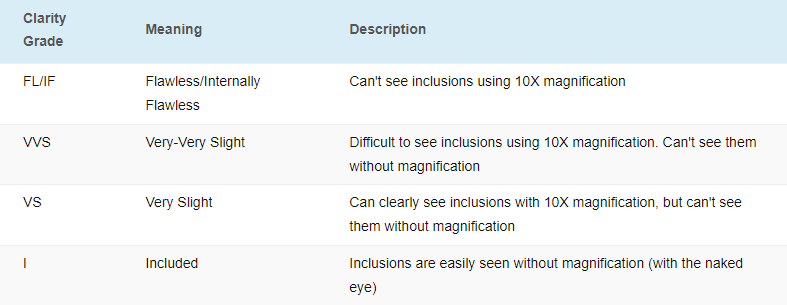
The Gemological Institute of America (GIA) developed a clarity scale for diamonds, which includes the following grades: Flawless (FL), Internally Flawless (IF), Very, Very Slightly Included (VVS1 and VVS2), Very Slightly Included (VS1 and VS2), Slightly Included (SI1 and SI2), and Included (I1, I2, I3).
Evaluating Clarity with Magnification
Clarity is officially evaluated by trained professionals using a 10x magnification loupe. This allows for the detailed viewing of a diamond's surface and internal structure, revealing inclusions or blemishes that impact its clarity grade.
Common Types of Inclusions
There are several types of inclusions like feathers (small fractures), crystals (mineral deposits), and clouds (hazy areas). These can affect the diamond's ability to transmit light and sparkle.
Visually Assessing Diamond Clarity
When it comes to visually assessing clarity, many professionals and consumers look for what is termed as "eye-clean," where inclusions are not visible to the unaided eye.
The Concept of 'Eye-Clean' Diamonds
An eye-clean diamond does not show inclusions when viewed with the naked eye and may possess clarity grades from SI1 or higher. It strikes a balance between beauty and budget.
Impact of Diamond Shape on Clarity
| Diamond Shape | Clarity Characteristics |
|---|---|
| Round | Often hides inclusions well due to brilliance. |
| Princess | Sharp corners may reveal inclusions more prominently. |
| Emerald | Step-cut facets can make inclusions more visible. |
| Asscher | Similar to emerald cut, may emphasize inclusions. |
| Cushion | Varied facets may hide or accentuate inclusions. |
| Marquise | Long shape may hide inclusions near tips. |
| Heart | Inclusions may be more visible in the pointed area. |
| Oval | Long shape may hide inclusions well. |
| Pear | Pointed end may reveal inclusions more prominently. |
| Radiant | Facets may help to hide inclusions effectively. |
The shape of a diamond can influence the perception of clarity. Step-cut diamonds, like emerald and Asscher cuts, can make inclusions more visible, whereas brilliant-cut diamonds, such as round or princess cuts, can hide inclusions better due to their faceting.
Carat Weight and Perceived Clarity
The carat weight can also affect how inclusions are perceived. Larger diamonds, due to bigger surface areas, can make inclusions more visible, which means a higher carat diamond might require a higher clarity grade to be considered eye-clean.
Choosing Eye-Clean Diamonds
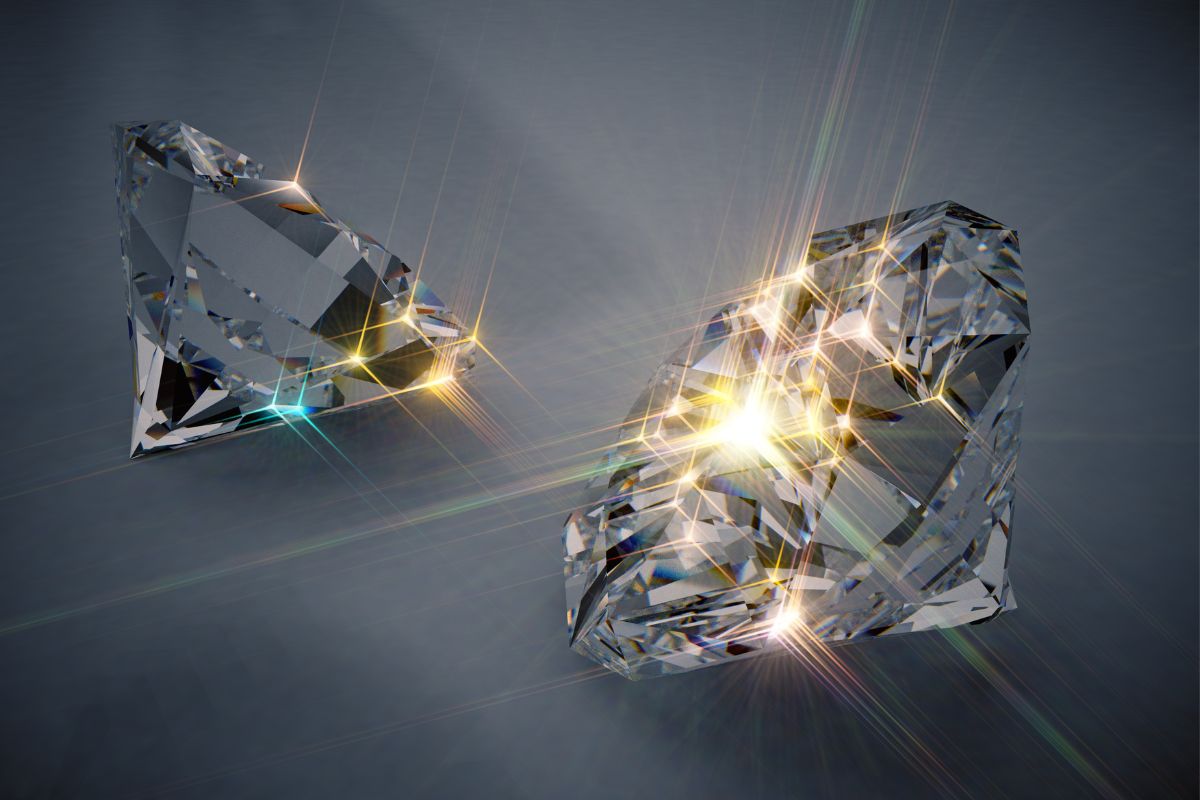
When selecting eye-clean diamonds, it's crucial to consider factors such as the size of the diamond, which can affect the visibility of inclusions, and how the quality of the cut can influence a diamond's clarity. The color of a diamond also plays a role in how noticeable any imperfections might be, and knowing how to inspect a diamond can ensure you make an informed decision. Finding a reputable retailer is just as important as the diamond's attributes.
Diamond Size and Visibility of Inclusions
The term "eye-clean" refers to diamonds in which inclusions are not visible to the naked eye when viewed from about 12 inches away in good lighting conditions. Generally, the larger the diamond, the easier it might be to spot imperfections. For instance, inclusions in a 1-carat diamond are more likely to be visible than in a smaller stone due to its greater surface area.
The Influence of Cut Quality on Clarity
A well-executed cut can maximize a diamond's brilliance and minimize the appearance of inclusions. A diamond that's cut to create the optimal balance of light return, or "fire," can distract the eye from small internal flaws. Therefore, cut quality should be a high priority when shopping for an eye-clean diamond.
Color and Its Relation to Clarity
The color of a diamond can impact how noticeable inclusions are. Diamonds with a slight yellow tint can mask certain imperfections, but this isn't a hard and fast rule. It's important to examine each diamond individually, as the contrast between the inclusion and the diamond's body color affects the visibility of imperfections.
Best Practices for Inspecting Diamonds
When inspecting diamonds, I advise doing so in various lighting conditions, including daylight. Look at the diamond face up and scrutinize it from different angles. Tools like a jeweler's loupe can help, although they're not necessary for determining whether a diamond is eye-clean.
Where to Shop for Eye-Clean Diamonds
I recommend purchasing diamonds from reputable retailers like James Allen or Blue Nile, which provide high-quality images and videos of their diamonds. Ensure that the diamond comes with certification from respected organizations such as the Gemological Institute of America (GIA) or the American Gem Society (AGS), which confirms the stone's quality attributes.
Diamonds and Lighting Conditions
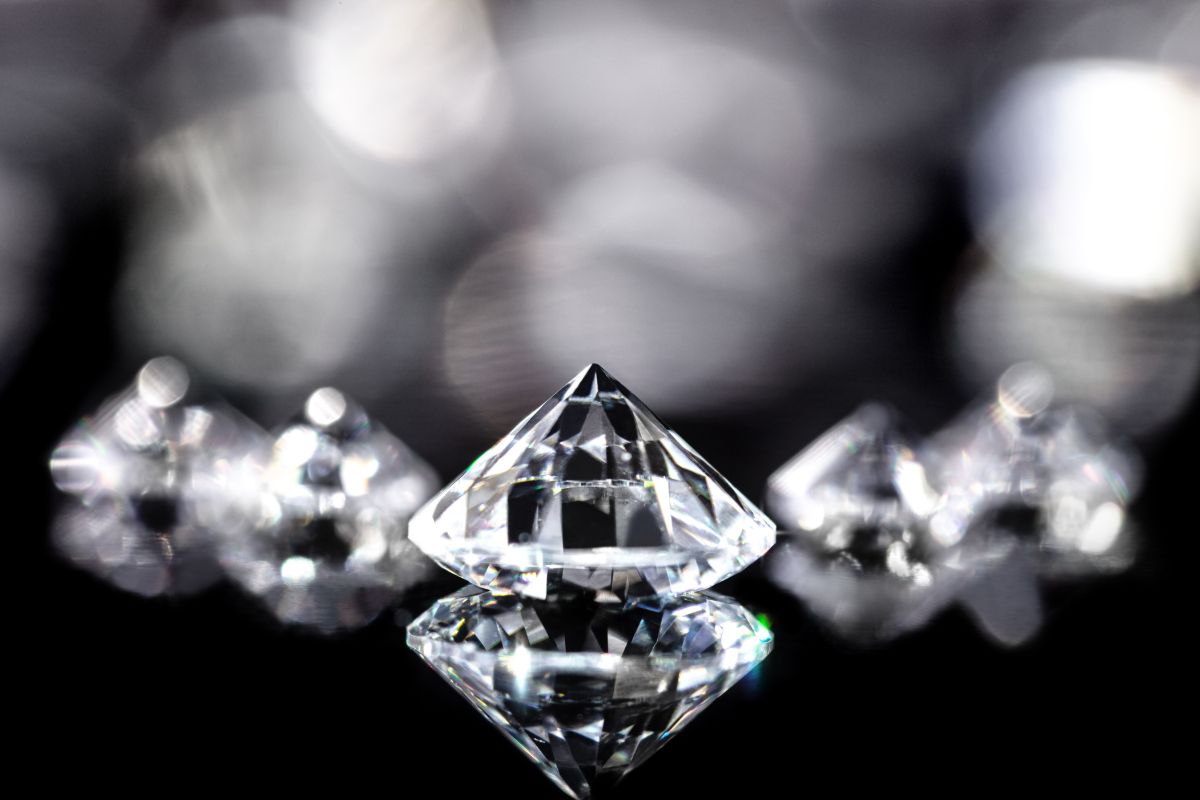
When I evaluate diamonds, I pay close attention to how lighting conditions affect their appearance, particularly concerning their transparency and whether they qualify as eye-clean.
The Role of Lighting in Diamond Shopping
Lighting is crucial in determining a diamond's true quality. It can either accentuate or obscure imperfections. As a retailer, it's my duty to showcase diamonds under lighting that closely resembles daylight. This is because daylight offers the most accurate representation of a diamond's clarity. In the context of eye-clean diamonds, which are gems that appear free from inclusions to the naked eye, proper lighting is essential. Under harsh lighting, even eye-clean diamonds may betray minor imperfections, while soft lighting might hide more pronounced flaws.
Viewing Diamonds Under Different Light Sources
Daylight: The best lighting condition to examine a diamond's clarity is natural daylight. It reveals the stone's true transparency, allowing me to identify if a diamond is genuinely eye-clean.
-
Fluorescent Lighting: This light source can hide inclusions and is rarely ideal. For consistency, I avoid using exclusively fluorescent lighting when assessing diamonds.
-
Mixed Lighting: A combination of different light sources, such as fluorescent and incandescent, often presents a more balanced view. I find that this setup can help mimic a range of everyday environments.
-
LED Lighting: Many retailers use LED lights due to their efficiency and brightness. However, I must consider the color temperature of these LEDs. Warmer LEDs can enhance a diamond's color, whereas cooler LEDs offer a stark view of transparency and potential inclusions.
In my experience, when clients understand how lighting affects the perception of a diamond's clarity, they make more informed decisions. Choosing the right lighting to examine a diamond is a critical step toward ensuring the gem meets their expectations.
Diamond Certification and Reports
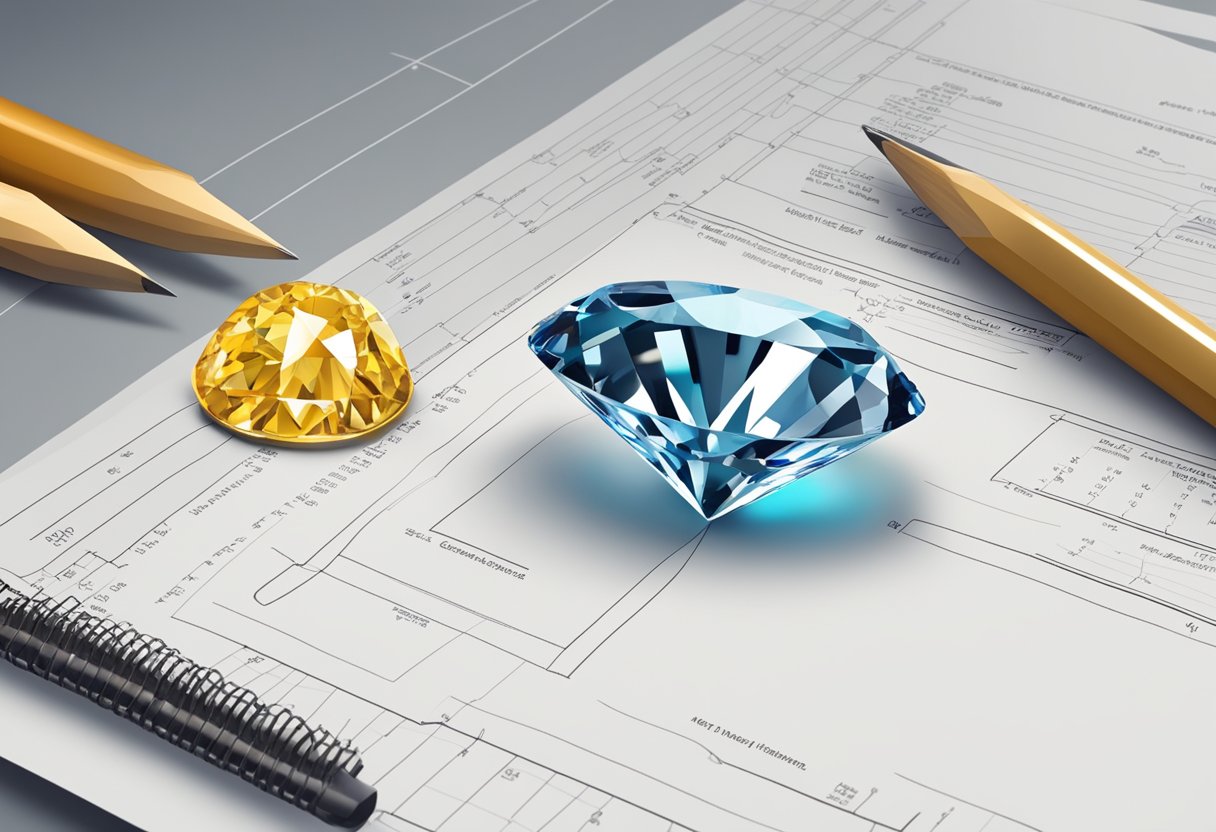
When considering diamond clarity and the concept of eye-clean diamonds, certification and grading reports are crucial. These documents provide a transparent view into a diamond's qualities, ensuring consumers can make informed decisions based on rigorous assessments from reputable institutions like the GIA and AGS.
Understanding GIA and AGS Certifications
The Gemological Institute of America (GIA) and the American Gem Society (AGS) are leading entities in the diamond industry, providing certification for diamonds. GIA's certification process is globally recognized for its thoroughness, examining aspects such as diamond clarity, cut, color, and carat weight. A GIA report assures me that the diamond's characteristics have been meticulously evaluated. Similarly, AGS is known for its unique cut grading system, which focuses on how well a diamond interacts with light, an essential factor for eye-clean diamonds.
Reading a Diamond Grading Report
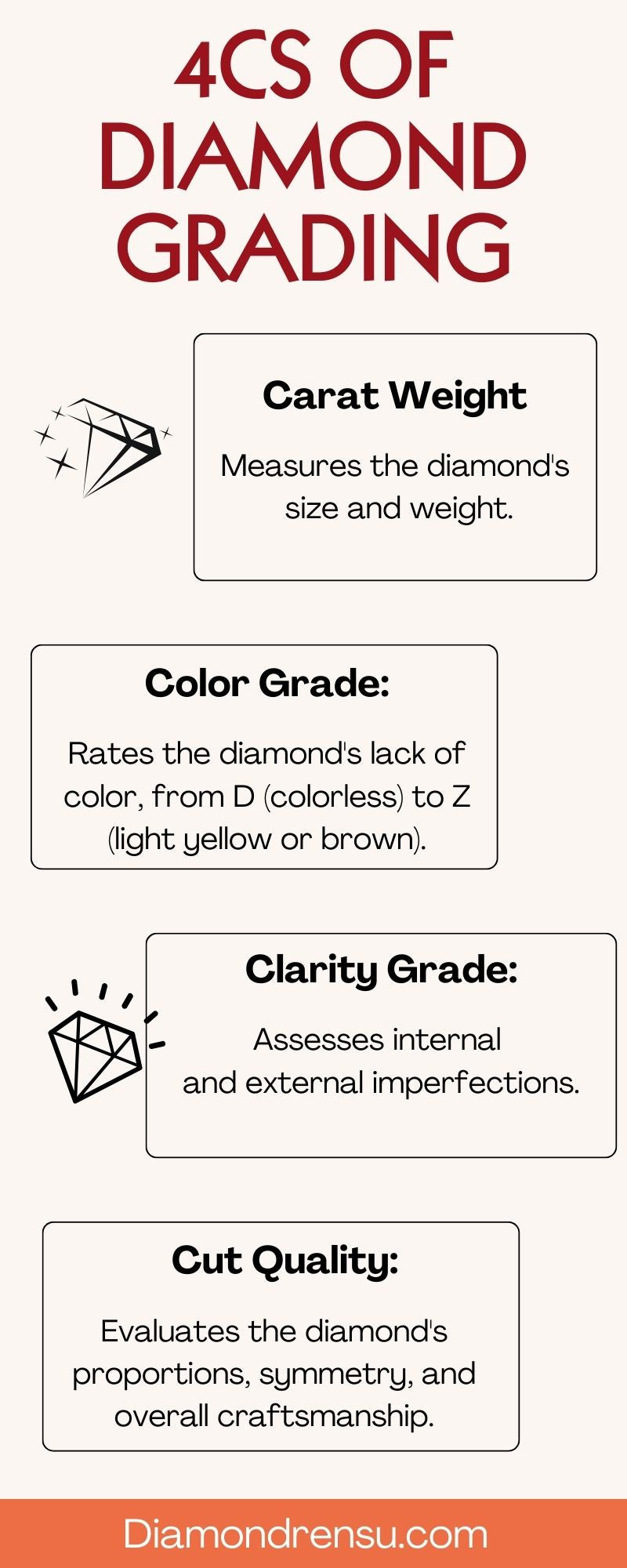
A diamond grading report from entities like GIA or AGS offers a comprehensive analysis of a diamond. Key sections of the report include:
- Clarity Grade: Denotes the presence of inclusions and blemishes, which determines whether a diamond is eye-clean.
- Cut Grade: Assesses the diamond's proportions and finish, major contributors to its brilliance.
- Color Grade: Indicates the absence of color, with grades closest to 'D' (colorless) being the most desirable.
- Carat Weight: Provides the diamond's weight measurement, impacting its overall value.
Reading a grading report helps me understand the quality of the diamond I am considering, beyond just clarity.
The Importance of Certification for Eye-Clean Diamonds
Certification by institutions like GIA ensures that a diamond has been unbiasedly analyzed and deemed eye-clean. "Eye-clean" means that inclusions cannot be seen with the naked eye when viewed from about 12 inches away. This is a subjective measure; hence, having a grading report lends trust and transparency to the claim, providing peace of mind for consumers like me. It stands as a testament to the quality of the diamond and protects my investment in a tangible way.
Customizing Your Engagement Ring
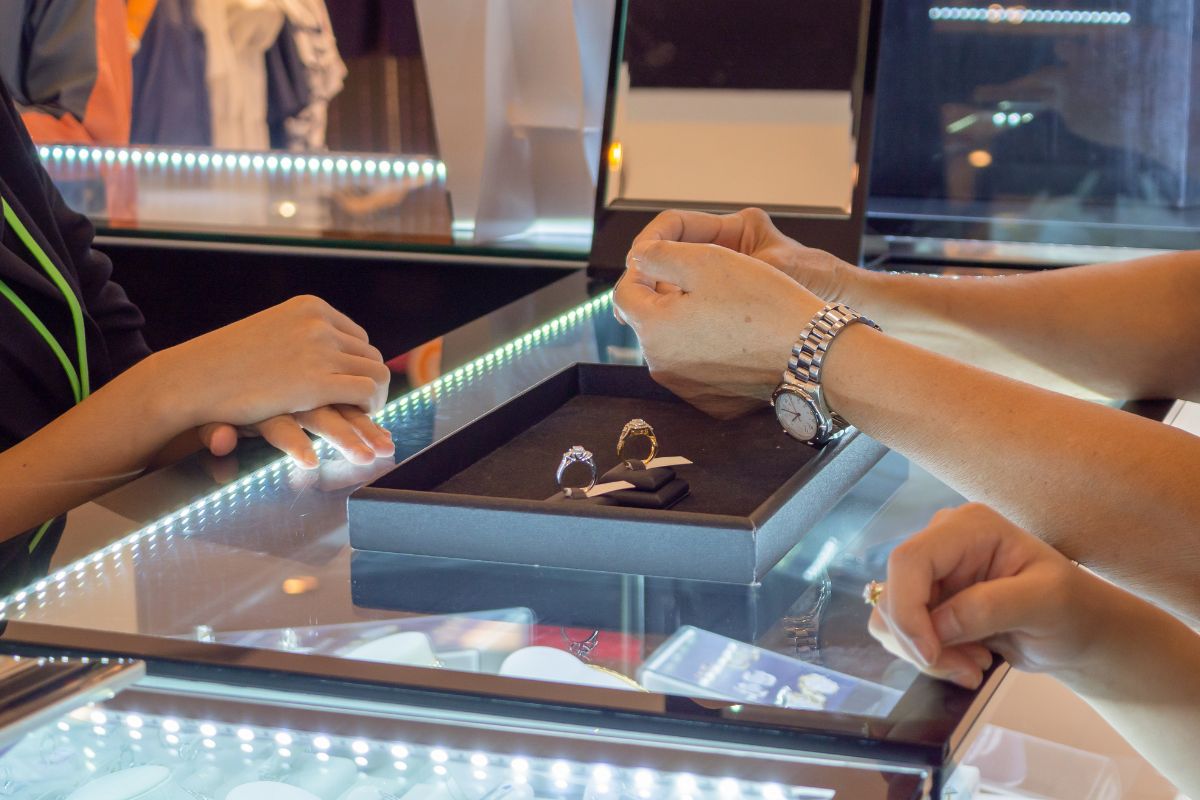
When I set out to customize an engagement ring, my focus is on both aesthetics and quality. An eye-clean diamond that appears flawless to the naked eye is central to the piece, and with a careful selection process, I can ensure the chosen stone meets this criterion. Alongside diamond clarity, the design elements play a significant role in accentuating the stone's beauty.
Selecting an Eye-Clean Diamond for Your Engagement Ring
Eye-clean diamonds are those that, to the naked eye, appear free from blemishes and inclusions. Clarity is a prime consideration and, while shopping at a jewelry store, I make it a point to inspect the diamond closely. Clarity grades can range from Flawless (FL) to Included (I), but I aim for diamonds rated Slight Included (SI) or better because they often appear as eye-clean yet come at a more accessible price point than higher-grade diamonds. Here's a brief table explaining eye-clean clarity grades:
|
Clarity Grade |
Description |
|
FL-IF |
Flawless or Internally Flawless; no visible inclusions or blemishes even under magnification. |
|
VVS1-VVS2 |
Very Very Slightly Included; inclusions are difficult to see even under 10x magnification. |
|
VS1-VS2 |
Very Slightly Included; minor inclusions seen with effort under 10x magnification, often eye-clean. |
|
SI1-SI2 |
Slightly Included; inclusions are noticeable under 10x magnification but usually eye-clean to the naked eye. |
Engagement Ring Design Elements and Diamond Clarity
The design of the engagement ring frames the diamond and should complement its strengths. A well-chosen setting can protect the diamond and can even hide minor inclusions, making it appear more flawless. For example, a prong setting allows for a lot of light to enter the stone, increasing its brilliance and making inclusions less noticeable. Conversely, with a baguette or other step-cut diamond, I'd be extra careful, for these cuts can make inclusions more visible; a higher clarity grade would be prudent in such cases.
The engagement ring should mirror my partner's style as well. When I'm customizing, I consider whether a classic, modern, or unique design best suits their personality. I explore various combinations, looking for balance and harmony between the cut of my eye-clean diamond and the design elements of the ring, to create a piece that is as unique and special as the love it represents.
Caring for Eye-Clean Diamonds
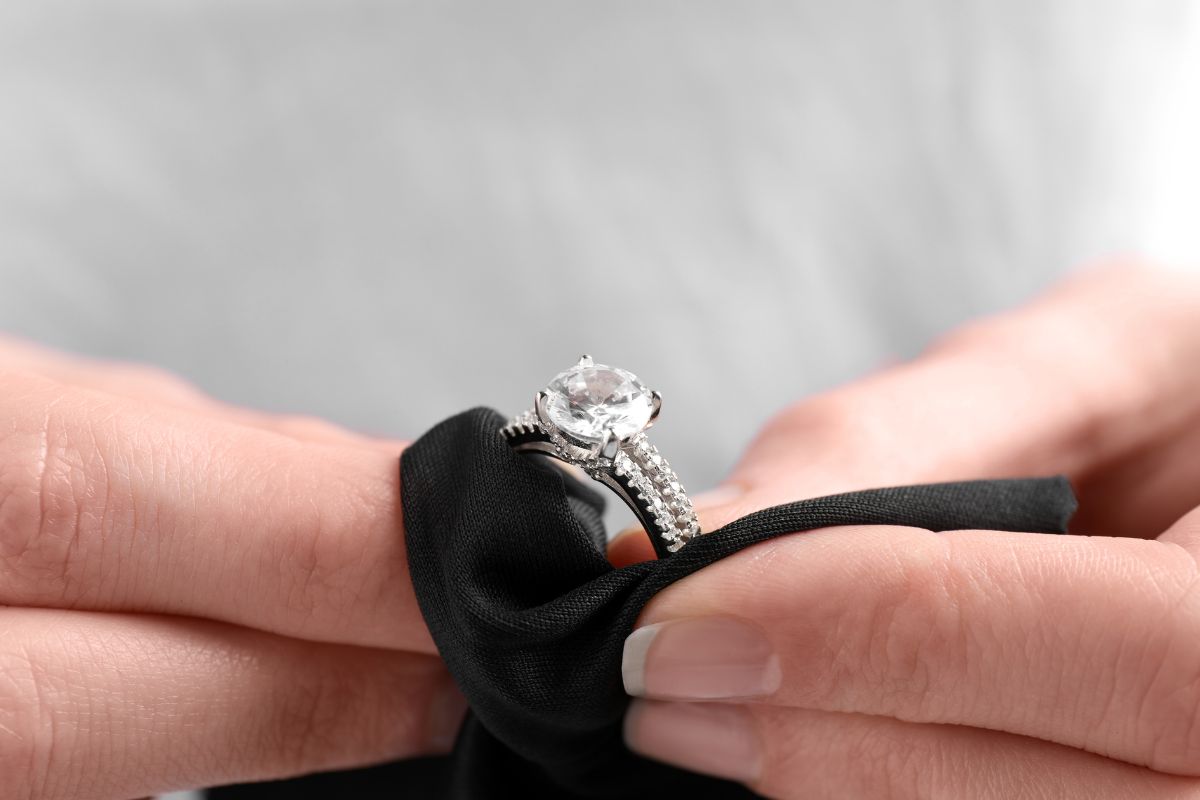
Eye-clean diamonds maintain their brilliance with proper care, which hinges on regular maintenance and the right cleaning and storage techniques. I'll guide you through the essentials to keep your eye-clean diamonds sparkling without exacerbating any imperfections.
Maintenance Tips for Eye-Clean Diamonds
- Routine Checks: I make it a habit to inspect my eye-clean diamonds regularly. Even minute changes in appearance can indicate a need for cleaning or maintenance. I look for loose settings and signs of wear, especially if the diamond is part of a frequently worn piece of jewelry.
- Professional Cleanings: Yearly, I take my eye-clean diamonds to a certified jeweler for thorough cleaning and inspection. This ensures not only a deep clean that maintains the diamond's purity and luster but also that any underlying issues are caught early.
Cleaning and Storing Eye-Clean Diamonds
Cleaning at Home: For at-home cleaning, I create a solution of warm water and mild dish soap. Using a soft-bristle brush, I gently clean the diamond, ensuring I reach the underside where grime tends to accumulate. Afterward, I rinse the diamond with warm water and pat it dry with a lint-free cloth.
Storing Methods:
- When I'm not wearing my eye-clean diamonds, I store them separately in a fabric-lined jewelry box.
- Each piece rests in its own compartment to avoid scratches.
- For added protection, I sometimes wrap each diamond in a soft cloth.
By following these steps, I help maintain the flawless appearance of my eye-clean diamonds, ensuring their imperfections remain invisible to the naked eye and their aesthetic value preserved.
Conclusion
Eye-clean diamonds are my specialty, as they offer a beautiful balance of quality and value. When I examine these gemstones, my focus is on ensuring their inclusions are not visible to the naked eye from a typical viewing distance. I prioritize eye-clean diamonds because they instill confidence in my clients—they know they're receiving a stone that looks flawless to the casual observer without paying the premium for a technically flawless gem.
In my professional experience, the trust customers place in jewelers hinges on transparent information about the diamonds they're considering. I make it a point to educate my clients about what to look for in an eye-clean diamond, such as the size, location, and type of inclusions. By being well-informed, they can make decisions with greater assurance.
Knowledge is power, especially in the diamond industry. It's important for me to stay informed on the latest grading standards and cleaning technologies, as they can impact the perception of what qualifies as eye-clean. For instance, recent studies revealed that with thorough cleaning protocols, such as those mentioned in the research on diamond burr sterilization, the clarity of diamonds could be maintained effectively over time.
I stand by the philosophy that an eye-clean diamond represents a smart choice for those who desire beauty and elegance without compromising on quality. As a jeweler, providing my clients with such gems is not just a matter of business—it's a testament to my dedication to delivering excellence while honoring their trust and confidence.
Additional Styles and Shapes
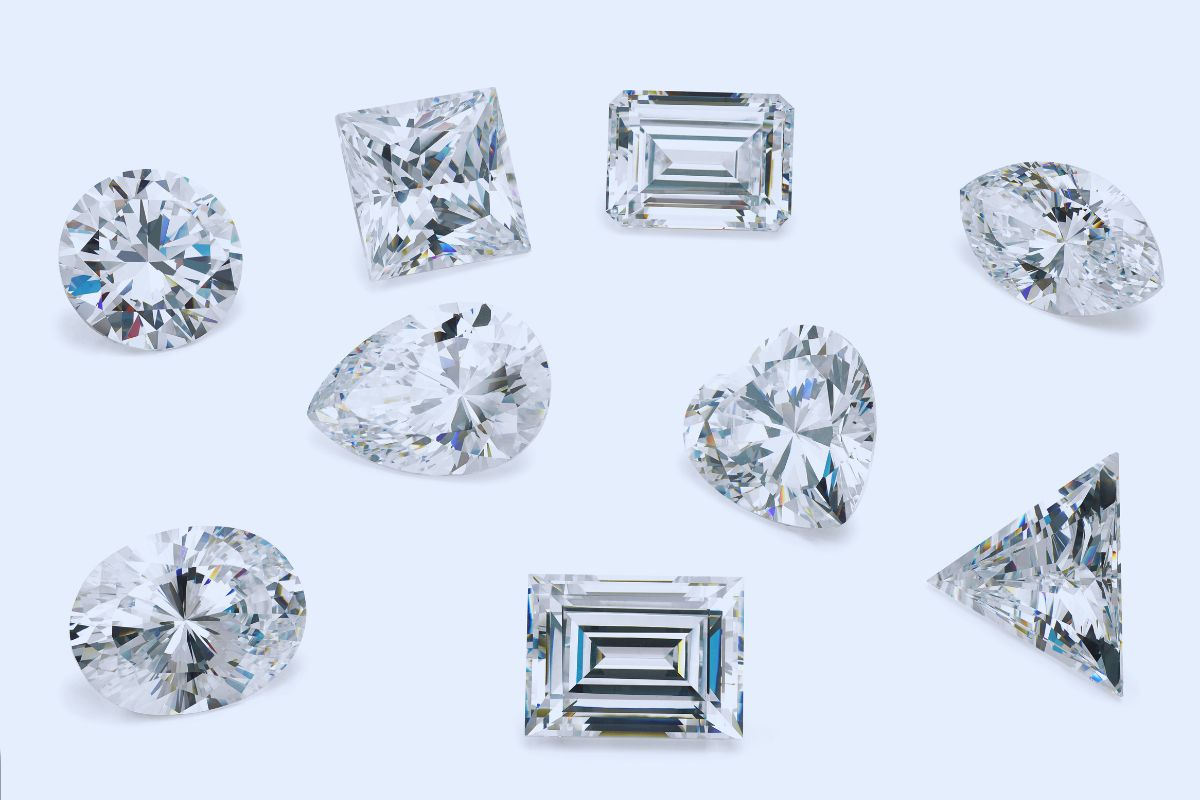
When selecting a diamond, its shape and cut are significant factors in determining how clarity, particularly whether the gemstone is eye-clean, is perceived. The term "eye-clean" refers to diamonds that appear free of inclusions or blemishes to the naked eye at a normal viewing distance. Each diamond shape displays clarity characteristics differently, and it's essential to understand how these impact the appearance of eye-cleanliness.
Alternative Diamond Shapes and Eye-Cleanliness
Some diamond shapes can mask inclusions more effectively than others. For instance, the brilliant-cut shapes like the round, cushion cut, and oval cut are crafted to optimize light reflection and refraction. What this means for you is that these shapes often hide inclusions better than others, making them more likely to appear eye-clean even when their clarity grade is slightly lower.
Step-cut diamonds, such as the emerald cut, have long, unbroken facets that act like mirrors. With these shapes, I have observed that clarity imperfections are more visible, which means they require a higher clarity grade to be considered eye-clean. Marquise, pear-shaped, and heart-shaped diamonds can also cover inclusions near the ends or sides due to their unique facets, but it's vital to examine them carefully as their pointed ends can make certain inclusions more visible.
Unique Diamond Cuts and Clarity Considerations
Unconventional diamond cuts such as the radiant cut provide a remarkable balance between the brilliant and step cuts. The blended cutting style makes these diamonds' capacity to conceal inclusions impressive. In my experience, radiant cuts can withstand a lower clarity grade while still maintaining an eye-clean appearance.
Among these unique cuts, the cushion cut stands out as an antique style that presents an eye-clean appearance in many instances due to its pillowy shape and facet pattern. However, the distinct "crushed ice" look of some cushion cuts can make inclusions more noticeable, demanding careful inspection.
Moreover, heart-shaped diamonds often require a higher clarity grade to ensure the absence of visible inclusions. The complexity of the heart shape cut demands precision, and any inclusions can stand out against the clear love symbol.
As you explore these styles and shapes, keep in mind the trade-off between diamond cut and clarity. While some shapes can afford to have lower clarity grades and still appear eye-clean, others might demand higher clarity for the same effect. Always inspect the diamond closely, considering its unique characteristics to make an informed decision.
Frequently Asked Questions
Eye-clean diamonds exhibit a clean appearance to the naked eye, meaning no inclusions or blemishes are visible when viewed face-up at a normal viewing distance. This characteristic is highly sought after as it affects the beauty and value of the diamond.
How can the clarity grade of a diamond affect its eye-clean appearance?
The clarity grade of a diamond is a key factor in its eye-clean status. Diamonds are graded from Flawless to Included based on the visibility of inclusions and blemishes under 10x magnification. Generally, the higher the clarity grade, such as VVS (Very Very Slightly Included) or VS (Very Slightly Included), the more likely a diamond will appear eye-clean. However, some diamonds with lower clarity grades can also appear eye-clean if their inclusions are well-positioned or less noticeable.
What is the difference between an eye-clean and non-eye-clean diamond?
An eye-clean diamond shows no visible inclusions or blemishes to the unaided eye, whereas a non-eye-clean diamond has imperfections that are easily seen without magnification. This distinction is critical for aesthetic and financial reasons, as eye-clean diamonds are typically more valuable.
How does diamond color relate to its eye-clean status?
Diamond color is graded from D (colorless) to Z (light yellow or brown), and it can influence the eye-clean perception. While color doesn't directly affect the clarity, a diamond with a lower color grade might mask certain inclusions or make them less noticeable, potentially impacting the overall appearance of being eye-clean.
Are certain clarity grades such as VS1 or VS2 guaranteed to be eye-clean?
While VS1 and VS2 diamonds are often eye-clean, there is no absolute guarantee as it can depend on the nature and location of inclusions. VS1 inclusions are typically harder to see than VS2, but each diamond should be observed individually to determine if it meets the eye-clean standard.
Can gemstones other than diamonds also be considered eye-clean?
Yes, the term ‘eye-clean’ can also apply to other gemstones. Similar to diamonds, gemstones are evaluated for visible inclusions or blemishes to determine if they are eye-clean. The standards for what constitutes eye-clean may vary depending on the type of gem and its typical inclusion patterns.
What should I look for to determine if a moissanite is eye-clean?
When determining if a moissanite is eye-clean, similar rules apply as to diamonds. It's important to look for any visible inclusions or blemishes that can be seen with the naked eye, especially since moissanite is known for its high clarity, making most imperfections quite rare.
Checkout some of our top collections:
Leave a comment
Please note, comments must be approved before they are published.

